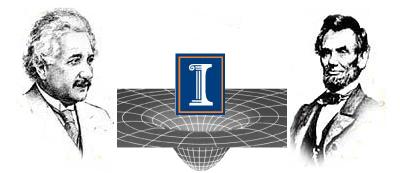Magnetorotational Collapse of Supermassive Stars: Black Hole Formation and Jets

- Lunan Sun
- Vasileios Paschalidis
- Milton Ruiz
- Stuart L. Shapiro
Abstract
We perform MHD simulations in full GR of uniformly rotating stars that are marginally unstable to collapse. Our simulations model the direct collapse of supermassive stars (SMSs) to seed black holes (BHs) that can grow to become the supermassive BHs at the centers of quasars and AGNs. They also crudely model the collapse of massive Pop III stars to BHs, which could power a fraction of distant, long gamma-ray bursts (GRBs). The initial stellar models we adopt are $\Gamma = 4/3$ polytropes seeded with a dynamically unimportant dipole magnetic field (B field). We treat initial B-field configurations either confined to the stellar interior or extending out from the interior into the stellar exterior. The BH formed following collapse has mass $M_{BH} \simeq 0.9M$ (where $M$ is the mass of the initial star) and spin $a_{BH}/M_{BH}\simeq 0.7$. A massive, hot, magnetized torus surrounds the remnant BH. At $\Delta t\sim 400-550M\approx 2000-2700(M/10^6M_\odot)$s following the gravitational wave (GW) peak amplitude, an incipient jet is launched. The disk lifetime is $\Delta t\sim 10^5(M/10^6M_\odot)$s, and the jet luminosity is $L_{EM}\sim 10^{51-52}$ ergs/s. If $\gtrsim 1-10\%$ of this power is converted into gamma rays, SWIFT and FERMI could potentially detect these events out to large redshifts $z\sim 20$. Thus, SMSs could be sources of ultra-long GRBs and massive Pop III stars could be the progenitors that power a fraction of the long GRBs observed at redshift $z \sim 5-8$. GWs are copiously emitted during the collapse, and peak at $\sim 15(10^6 M_{\odot}/M)\rm mHz$ ($\sim 0.15(10^4 M_{\odot}/M)\rm Hz$), i.e., in the LISA (DECIGO/BBO) band; optimally oriented SMSs could be detectable by LISA (DECIGO/BBO) at $z \lesssim 3$ ($z \lesssim 11$). Hence $10^4 M_{\odot}$ SMSs collapsing at $z\sim 10$ are promising multimessenger sources of coincident gravitational and electromagnetic waves.
arXiv:1704.04502